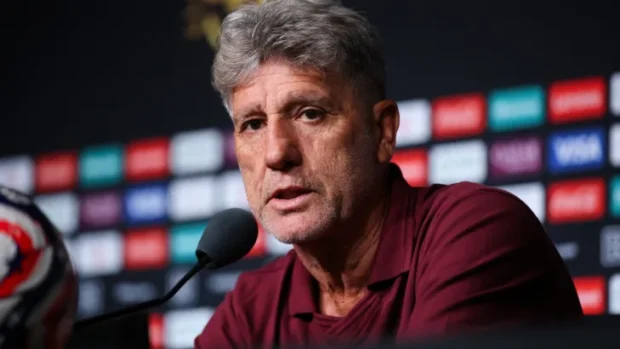
Ever since the Bills used a first-round pick on Dalton Kincaid in 2023, they have invested heavily in the tight end position. Not only does Kincaid remain signed, but Dawson Knox is also under contract for his long-term extension, which the two sides agreed to in 2022.
Despite having so much pushed toward the position, the Bills still have questions about the group. Whether it’s in the way they divvy up the work or whether they should run more formations with both top options on the field, the Bills have some questions to answer in 2025.
How will it all come together in training camp, and what could be on the way in the upcoming year? Here is a detailed outlook for when the Bills return for training camp in late July.
2025 Bills projected TE depth chart
What’s changed?
The tight end room remains mostly unchanged, with three of the team’s top four returning. Kincaid and Knox will remain the team’s top pair of tight ends, with Kincaid being the superior receiving threat and Knox offering more run-blocking functionality. The Bills made their most notable switch as they let Quintin Morris, who had been the team’s third tight end for several seasons, walk in free agency this offseason. Morris landed with the Jaguars, linking with former Bills special teams coordinator Heath Farwell. To spin the tight end position forward, the Bills used a fifth-round selection on Jackson Hawes to become Morris’ long-term replacement, potentially. Zach Davidson returns to the team for a fourth year without ever having been on the 53-man roster outside of a few game-day elevations, and undrafted rookie Keleki Latu rounds out the group.
Advertisement
Biggest question
Can Dalton Kincaid become the player they thought he’d be when they drafted him?
It’s kind of wild to think about how different the offseason hype has been for Kincaid from last year to this year. This time last year, Kincaid had just come off an extremely promising first season, with Knox missing time with a multi-week injury. Over those five weeks, Kincaid was on a 105-catch, 955-yard pace and showed a lot of the potential the Bills saw in him when they selected him in the first round. Many extrapolated that sample size in the year, thinking that could become his new normal, and expectations of Kincaid became exorbitantly high for 2024, with many wondering if he would be the breakout star of the Bills’ passing offense.
That excitement level around Kincaid has dropped off a cliff this offseason after the tight end’s second year. In 2024, Kincaid did not take the top job fully from Knox, as the pair split their reps rather than having a clearly defined starter and backup. Especially in a season after the Bills traded away Diggs, Kincaid’s failure to become a key passing game contributor stung that much more. On top of it, Kincaid suffered a fairly significant knee injury in Week 10, missed three games after it, and upon his return in Week 15, rarely looked like the same player as before the injury. The disappointment in his early role and the injury that marred the second half of his season have led to external pessimism about Kincaid’s future.
Now, entering 2025, it’s almost as if there’s a reset on Kincaid. While he’s freed of the way-too-high expectations of 2024, he also has the chance to overcome the lingering doubt about what he can become in the Bills offense. Just as it did in 2024, it all depends on him and what he does to force a change in his role. The Bills commented throughout the offseason that they would like to see Kincaid get stronger, which, to them, is likely code for Kincaid getting better as a blocker. That single attribute is the likely key to Kincaid usurping a higher percentage of snaps from Knox, even though the team loves Knox. The Bills maintain a strong belief in Kincaid’s future, the same way that they did with right tackle Spencer Brown after his second-year struggles.
In the first nine games — before Kincaid’s injury in Week 10 — Kincaid took 66 percent of the offensive snaps when both he and Knox were available, while Knox had nearly 56 percent of snaps over that timeframe. Upon Kincaid’s return in Week 15, he took only 37 percent of offensive snaps, clearly showing the injury altered his impact on the season. Before the injury, Kincaid was on a full-season pace of 64 receptions for 627 yards. That pace would have placed him tied for 10th in the NFL in receptions and 13th in yards in 2024. After the injury, including the playoffs, Kincaid was on a full-season pace of only 45 receptions for 461 yards. Although the pre-injury pace was nothing close to the torrid pace without an injured Knox he showed as a rookie, it’s still a respectable rate for Kincaid that would have put him near the top of receiving seasons by a tight end in franchise history.
Advertisement
Should Kincaid get stronger and become a better blocker, which would enhance his time on the field in 2025, there is plenty of opportunity to get right back on track to where he was heading into 2024. Even if he only retains the role he had early in the season, he can still become a key contributor to the Bills, as that 627-yard pace would have landed him the second-leading receiver in 2024 behind only Khalil Shakir. That pace should be considered Kincaid’s baseline, with a clear opportunity to improve. There’s a legitimate chance he can upend the criticism and become one of Allen’s key targets this year. Though this year is a critical one for him, because if he doesn’t show he can handle a bigger snap share than what he did to begin 2024, it could cap the ceiling of what he can become in the NFL. Without question, it’s a massive year for Kincaid to see where he fits into the Bills’ future.
Potential camp battle
Jackson Hawes vs. Zach Davidson
With the Bills likely to keep only three tight ends on the 53-man roster, it boils down to the drafted rookie Hawes against the practice squad mainstay in Davidson. Hawes has a pretty strong reputation for his blocking abilities coming out of college, which will be an asset for the Bills should any injuries happen to Knox. At 6-foot-4, he’s also a massive target in the middle of the field, and even if he won’t offer much after the catch, he still has good hands to make some contested catches. Davidson is one of the most well-liked in the locker room, and he’s come a long way from where he started after joining the practice squad in 2022. He’ll provide more as a receiver than a blocker, although he lacks the top-end athletic upside. Although Davidson became a semi-popular deep roster player among fans during last year’s preseason, he likely has his work cut out for him to prove to the Bills that they should cut a young player they drafted who is now signed to a cost-controlled four-year rookie deal.
Special teams
The top two of Kincaid and Knox have not played on any special teams units over the last two years, and that is the expected outcome once again in 2025. But the Bills will want a special teams function out of their third tight end just as they had with Quintin Morris for years, which could ultimately determine who sticks on the roster in 2025. Davidson hasn’t been able to make his mark on special teams in the years he’s been with the Bills, so if they can trust Hawes on most of the core-four special teams units, that could shore up his spot on the team.
Who makes it and why?
Dalton Kincaid, Dawson Knox and Jackson Hawes
Among the position groups, tight end is one of the more straightforward ones for the Bills in 2025. The Bills usually only keep three tight ends, and Kincaid and Knox are roster locks and will remain a big piece of their offensive plan in the upcoming season. As for the third tight end spot, despite Davidson’s long-standing tenure within the Bills system, Hawes has the inside track on the job because of his status as a fifth-round draft pick. It doesn’t completely rule out Davidson, but Hawes would either need to suffer a long-term injury or be outplayed entirely by Davidson for the latter to stick as the third tight end. Plus, if the Bills are unsure of Knox’s long-term future with the team, given his salary and age, that’s one more reason to keep Hawes under his four-year rookie deal.
(Top photo of Dalton Kincaid: Tina MacIntyre-Yee / USA Today)
This news was originally published on this post .







Be the first to leave a comment